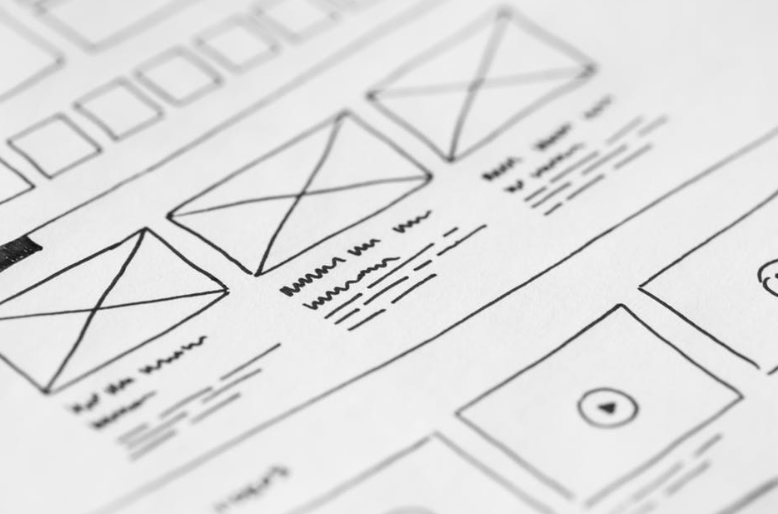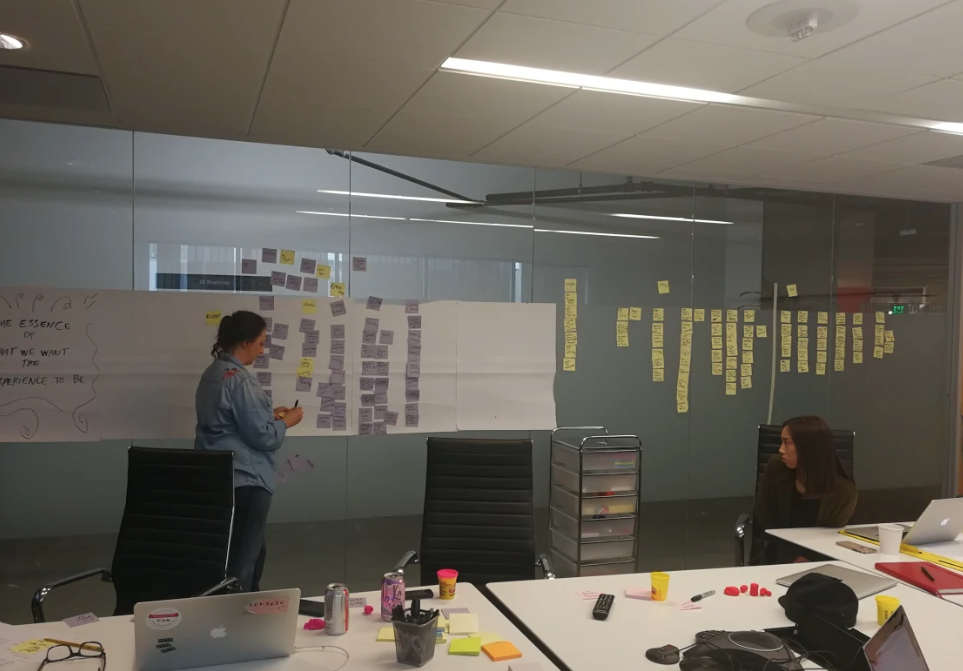
An Interview with a User Experience Designer: 13 Questions Answered
This piece is a part of ‘The Career Strategist’ blog series
This is the first installment of a three-part interview series with some of the designers we have at Hired. We’ll begin with a discussion with Kelly Gagnon, a UX Design Lead, about her experience in the world of design, her work as a user experience designer, and her time at Hired.
Brittany: Can you tell us a bit about yourself?
Kelly: I’m a designer. People tell me I work in tech, but I don’t consider myself in tech. Technology is the medium. I solve problems for humans. If I were designing for print or large format displays, or logos, I would use the same design skills.
Brittany: How did you get into design?
Kelly: I studied oil painting for 7 years (ages 10 to 17, in the Bob Ross style). My teacher encouraged me to go to art school; my parents thought I should focus on something practical so I could support myself. So I went to MassArt in Boston and got my BFA in Graphic Design, a compromise. Without that art teacher, I would probably still be living in Northern Maine, married to a potato farmer. I didn’t have a back-up plan.
Brittany: How long did you work in graphic design before you started getting involved in user experience design?
Kelly: My first job was designing book covers. I learned the power of designing the holistic experience, from the cover, to the store display, to marketing. I became an interactive art director shortly after, designing countless websites and internal company tools, like digital training modules and tools for sales teams. I did that for years. In 2004 I went to my first UX conference and was introduced to Jared Spool. Everything changed for me after that. I went from focusing on what the business needed to focusing on what the customer needed, which is the core of UX design.

Brittany: What kind of work are you responsible for at Hired?
Kelly: I’m responsible for the Candidate experience, end-to-end, from research, UX strategy, interaction / flows to visual design.
Brittany: Can you describe your day-to-day as a UX design lead?
Kelly: My day-to-day varies considerably. Some weeks I’m in user research, others I’m heads-down creating UI. Sometimes both at the same time. As a generalist, it’s important to protect your energy. Constant context switching can be draining.
Brittany: What are some projects you’ve worked on recently?
Kelly: Right now I’m conducting a research study trying to learn more about what candidates are doing during the interview process. Then we’ll use this to ideate solutions for work we are planning for Q4 or Q1.

Brittany: How do you approach UX design at Hired? In your experience, does it range greatly from company-to-company?
Kelly: I’m a fan of lean UX methodologies. I first read Jeff Gothelf’s book, Lean UX, in 2012. It immediately clicked for me because it works to align design, engineers, and business people. That was something I was struggling with at the time. I started using those methods in my projects right away. Some worked better than others, but I kept iterating and adjusting them. No project or team is exactly the same, so the same frameworks and methods that are successful on one project, might not work on another. Over time, I’ve gotten pretty good at knowing what will work and what won’t. I still try to learn what has worked for others, and I’ll experiment with it.
Brittany: In your opinion, can you describe the work of a great UX designer? What contributions do they make to the overall product?
Kelly: There’s no UX without research. We should not design for ourselves. A great UX designer will leverage research and validate assumptions. They design for behaviors and tasks and support the humans using our product.
Brittany: Do you have a personal design, or specifically UX design, philosophy you live by or guidelines you follow?
Kelly: This is one that is changing for me right now. Six months ago I would have said with confidence, Lean UX methodologies applied to Agile process is everything. Now I’m not so sure Agile is working for anyone anymore. It’s great for velocity, but bad for innovation, and I’m starting to get tired of velocity. I’m wondering if this process needs to evolve into something new; it’s a process that is almost 20 years old.
Brittany: Where do you find inspiration for your work in user experience design?
Kelly: I design for humans, I get inspiration from them, what they are thinking, feeling, doing, and I work to answer: how can I be of service to them?
Brittany: What areas of UX design are often overlooked?
Kelly: Service Design: design that can solve business and organizational problems. Many people think designers just make things look good. Everything about design and design thinking methodologies is geared towards problem solving. Why not take those methods and apply them to the design of your company? That’s powerful.
Brittany: What can we expect to see in terms of UX design from Hired in the future?
Kelly: A new style guide is in the works. This should help the team go faster and be consistent. We’re also developing product principles and a working charter. These are tools that will help unite the design team, as well as help us talk to our partners about how we work, and why we make the decisions we do.
Brittany: Do you have any advice for someone interested in pursuing UX design?
Kelly: Throughout my career I wanted my work to speak for itself. I wanted to be an expert and I spent much of my time learning heuristics and best practices. I wish someone had told me that I also needed to build relationships, and focus on team alignment and communication. Letting my work speak for itself caused me to struggle to get people to see the vision. It’s better now that I’ve been focusing on my facilitation and leadership skills. I wonder sometimes if I had focused more on building relationships if I would have had more opportunities.

